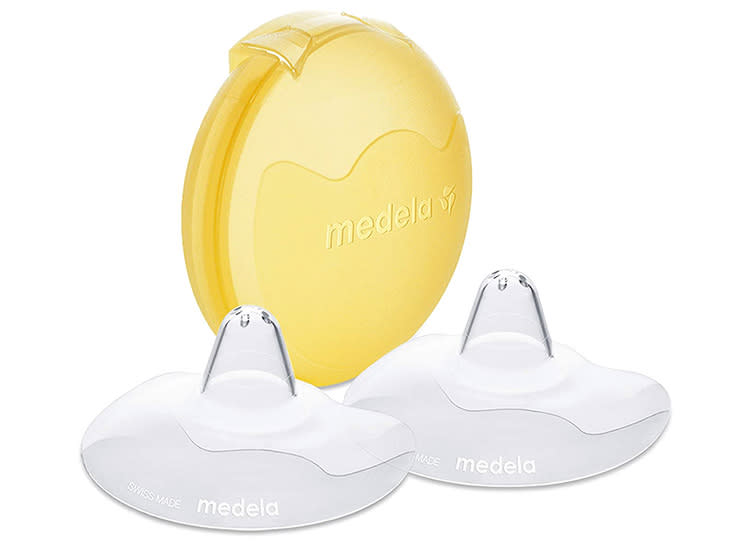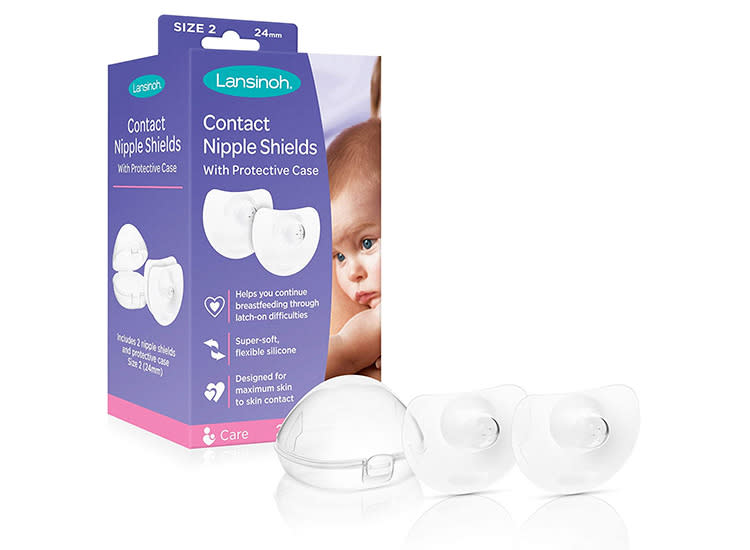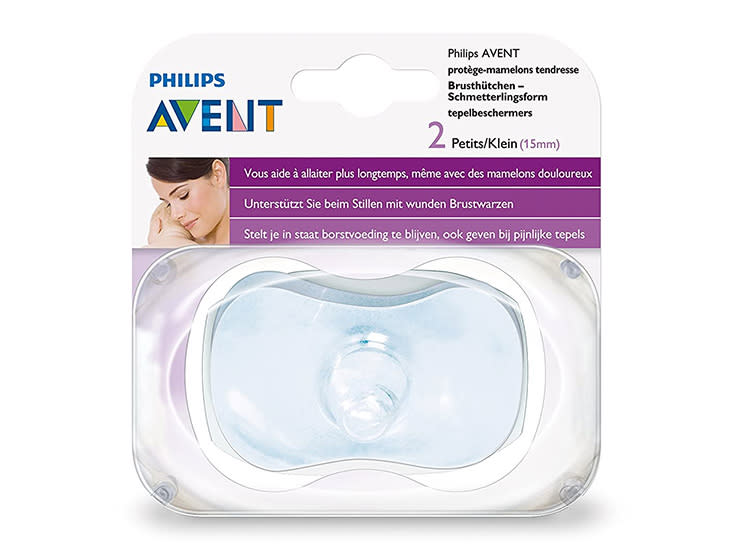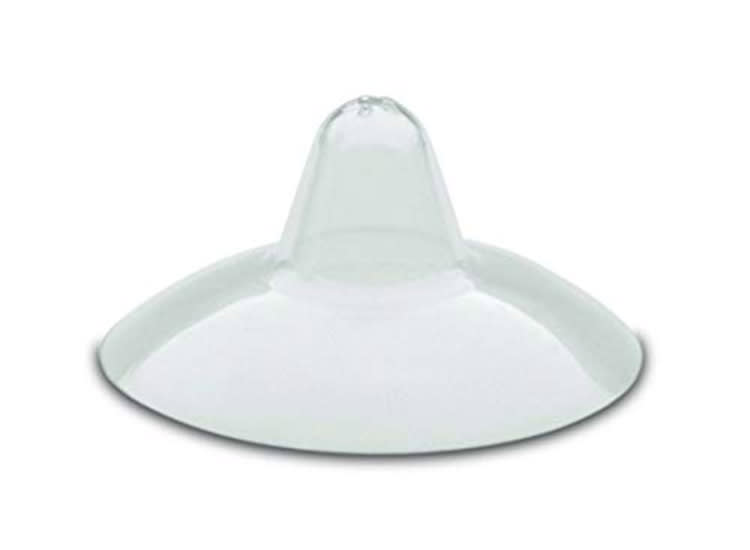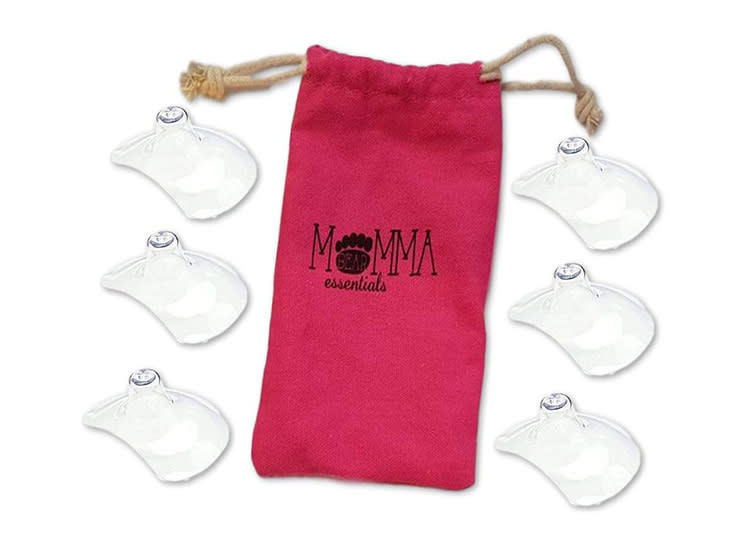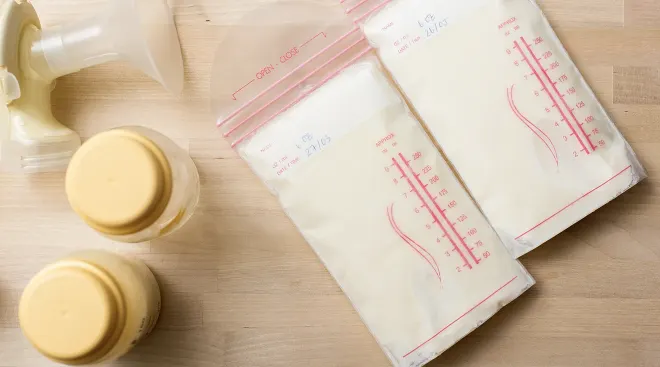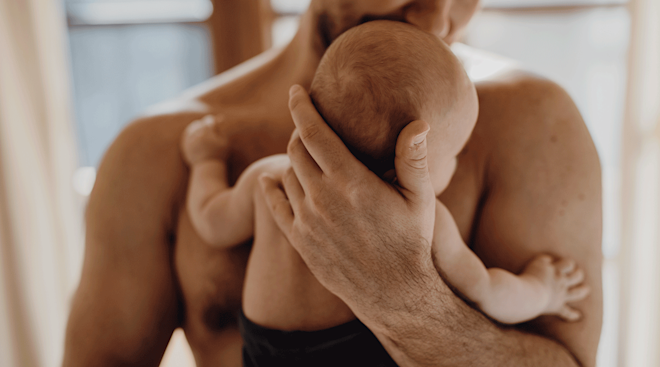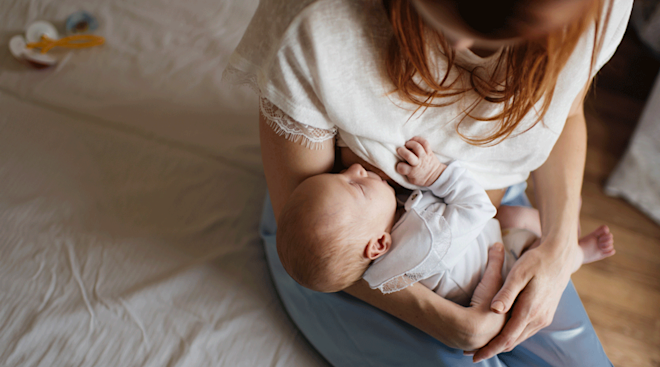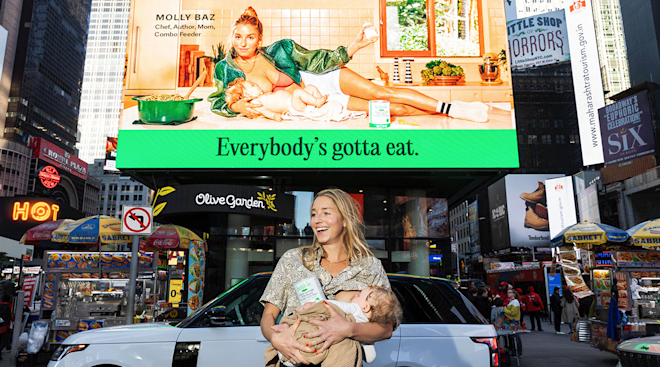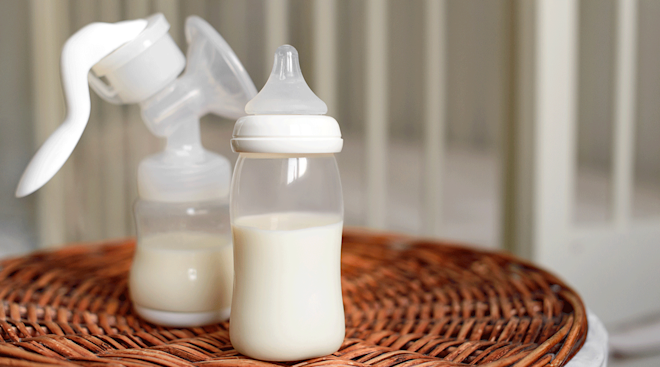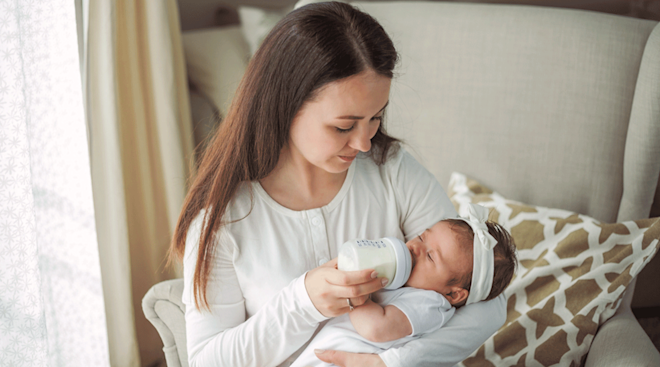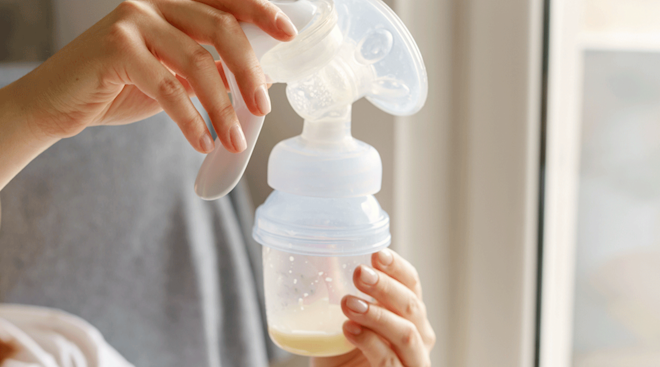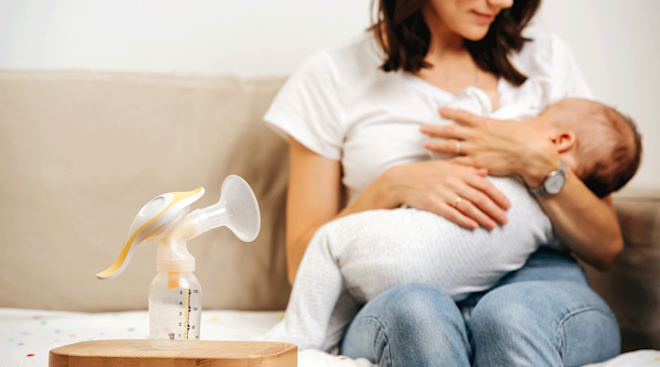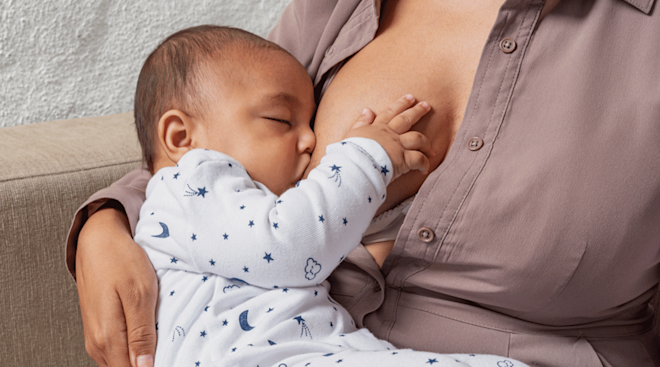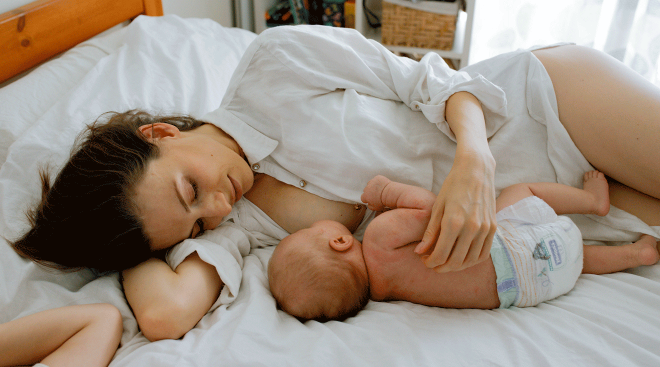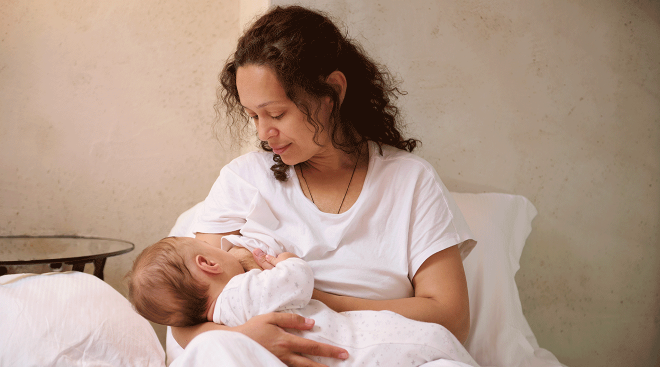Nipple Shields for Nursing: What They Are and How to Use Them
Breastfeeding is supposed to be the most natural thing in the world, right? Still, most new moms will tell you it can be incredibly challenging and surprisingly painful. For some, a nipple shield can mean the difference between being able to breastfeed and not. But, if you’ve never tried one before, you might be a bit confused about its purpose. So exactly what is a nipple shield, how does it work and why might you need one? Whether you’re planning to breastfeed baby or are already in the thick of it, here’s everything you need to know about using a nipple shield.
A nipple shield is typically made from silicone; it has small holes and is often shaped like a tiny wide-brimmed hat, explains Leigh Anne O’Connor, a board-certified lactation consultant and La Leche League leader. It fits over the nipple and areola and is used for a few different reasons, with the common goal of helping you breastfeed baby.
Basically, a nipple shield “helps the baby to attach and transfer milk,” explains nurse researcher Diane Spatz, PhD, a professor of perinatal nursing at the University of Pennsylvania.
Reasons to Consider Using a Nipple Shield
The early days of breastfeeding can be especially trying and particularly painful. It takes time to master the art of the latch—in the meantime, you and baby may feel frustrated and out of sync. While a nipple shield is generally regarded as a temporary solution, it can be a blessing when you want to push forward despite some initial difficulties. It’s best to consult a lactation consultant or doctor for guidance when struggling with breastfeeding issues and before using a nipple shield on your own. That said, here are the most common reasons you might consider trying a nipple shield:
- You have flat or inverted nipples. If your nipples don’t protrude, it can be harder for baby to latch on to nurse, explains Rebekah L. Huppert, RN, a lactation consultant at the Mayo Clinic. A nipple shield acts like an extension of your natural nipple and gives baby a more obvious target.
- You have an overactive let-down. Your “let-down” happens when milk is ready to flow out of your breast. If your milk comes out in a sudden surge, it may cause baby to choke or gag; they may swallow excessive air and become gassy and uncomfortable. “A nipple shield can help slow down that flow a little bit for moms whose milk comes out really fast and hard,” Huppert says.
- You have nipple pain or damage. Maybe baby sucked too hard at one point, or perhaps you’re just struggling with sore or cracked nipples—either way, a nipple shield can provide a barrier between your nipple and baby’s tongue to reduce friction. “It can decrease the pain and allow for healing,” Huppert says.
- Baby has a tongue tie. If baby has a tongue tie (a condition where the tissue between the tongue and the mouth’s floor is thick, tight and restrictive of movement) or other tongue-related issues, latching can prove difficult; a nipple shield may help.
- Baby is premature. Research has found that using a nipple shield can help a premature baby latch on and get milk more readily. The nipple shield may position the nipple in a way that makes the work of drawing out milk less taxing on baby. As your little one gradually grows and gains more strength, the nipple shield may become unnecessary.
Suffice to say, nipple shields can be beneficial in many circumstances. But they aren’t perfect, and there are some drawbacks to consider. You’ll want to weigh smoe of the pros and cons of using a nipple shield before deciding to try one.
Nipple shield pros
A nipple shield can be a godsend when used properly. Here are some advantages of these nifty silicone tools:
- Help establish a latch. If baby is having trouble latching for some reason (including those listed above), a nipple shield can help set you both up for success. Breastfeeding has a learning curve for you and baby, and a nipple shield can be a great transitional teaching tool.
- Keep you breastfeeding. The reality is, moms often (and understandably) throw in the towel long before they planned to because of breastfeeding pain, exhaustion and frustration. For many, nipple shields save the experience and prolong the breastfeeding journey.
Nipple shield cons
Here are a few potential downsides to using nipple shields:
- You need to remember to tote it along. You have to carry the nipple shield everywhere you go, Spatz points out. Of course, this is a minor inconvenience by most standards, but one of the perks of breastfeeding is supposed to be that you don’t need anything to do it anytime and anywhere.
- You have to sterilize it regularly. “The nipple shield needs to be washed with hot, soapy water after each use and rinsed well,” Spatz says. You also should sterilize it daily.
- They can interfere with the transfer of milk. A nipple shield can help some parents provide more milk to baby. But, for others, the device can actually impede milk transfer. “It can decrease the emptying or draining of the breast,” Huppert says.
- Decreased milk supply. If you’re not using the nipple shield correctly, or if you don’t transfer sufficient milk with them, your supply might diminish. You may need to pump after using a nipple shield to ensure adequate milk production, says Huppert.
- Possible risk of clogged milk ducts and mastitis. Again, if you’re not transferring enough milk with a nipple shield, it may cause a blockage and increase the chances of getting a painful clogged milk duct or even mastitis.
- Baby may become reliant. A nipple shield isn’t meant to be a long term solution. But baby doesn’t know that, and they may become dependent on using one and reject your bare nipple. This is why it’s important to wean baby in a timely fashion (more on that here).
Ready to give one a try? The good news is there isn’t a lot to master when learning how to use a nipple shield. At a basic level, the shield will fit over your nipple and areola. “The shield should be suction-cupped to the breast,” Spatz says. Once it’s in place, try to get baby to latch on.
Spatz offers up a little tip to coax baby to nurse using the shield: “I like to have moms pump a little first to get the milk flowing.” She adds that this will fill the tunnel of the shield and entice baby to latch.
When you’re nursing baby with a shield on, it’s important that your little one is on the whole breast—not just the tip. “After a feed, you should see visible milk in the tip of the shield,” Spatz points out.
How to put on a nipple shield
When first figuring out how to put on a nipple shield, a few quick tips from the experts can help. Huppert recommends inverting it slightly before you place it on your breast. This, she explains, “creates a little suction which helps draw the nipple into the shield and keeps it on the breast.” Another pro suggestion? O’Connor says running the nipple shield under warm water can soften it and make it easier to suction on.
Keep in mind that one size doesn’t fit all. Yes, proper nipple shield sizing is important, and fit and function go hand in hand with these accessories. Spatz explains that, first, you should look at the size of baby’s mouth and the size of your nipple.“You don’t want the shield to be too big and gag the baby, and you don’t want the shield to be too small to accommodate the nipple,” she says. What’s more, O’Connor stresses that a baby should have a wide latch, so a nipple shield that encourages a wide gape is also important.
Many companies have a measuring tool or guide that can help you find the nipple shield size that’s right for you. Typically, you’ll measure the nipple—not the areola—and add 4 millimeters to that number. “Then, look for a size that corresponds,” explains Huppert. You want your nipple shield to fit well without leaving a lot of space around the nipple.
You and baby may have a good thing going with your trusty nipple shield. But it’s not a forever solution, and weaning from the nipple shield is key. Huppert admits that this process “can be a little challenging.” It might take some time for baby to figure out the latch without that added layer in place.
One weaning hack worth a try? Huppert recommends starting a nursing session with the shield on; once baby is comfortably feeding, pull them off and remove the shield. Then, place baby back on your bare breast. This might do the trick. You can also try offering baby your bare breast when they’re sleepy, O’Connor says.
Ideally, they’ll wean without too much fuss. But if you’re confident baby is getting enough milk with the nipple shield in place (they’re gaining weight, wetting diapers and thriving!), and they’re putting up a fight about your bare nipple, don’t stress too much. Ultimately, nipple shield breastfeeding is still breastfeeding, so pick your battles. Keep calm and try again.
There’s a wide range of options out there, but experts say these are some of the best nipple shields to try.
Medela Contact Nipple Shield
Made of soft, thin silicone, Medela’s BPA-free nipple shields have a specialized cut-out area to get the maximum amount of skin contact between parent and baby. This kit includes two contact nipple shields and a portable carrying case.
Buy it: $7, Amazon.com
Lansinoh Contact nipple shields
These super-flexible, BPA-free nipple shields feature a special cut-out design to help you stay close and connected with baby. This set of two also comes with a carrying case for on-the-go storage.
Buy it: $8, Amazon.com
Haakaa nipple shields
Haakaa nipple shields are uniquely designed to mimic the look and feel of your areola, and help moms with flat and inverted nipples successfully nurse. Made with food-grade silicone, they’re free of BPA, PVC and phthalates; they also feature an anti-colic feature and a hard-to-collapse tip.
Buy it: , $19, Amazon.com
Philips Avent nipple protector
Odorless and tasteless, these BPA-free silicone nipple shield breastfeeding protectors come in two sizes—small and standard—to help you find the perfect fit.
Buy it: $13, Amazon.com
Ameda contact nipple shield
These BPA-free silicone shields are safe for you and baby; they’re specially designed to reduce friction (no more nipple chafing or soreness) and help keep you and baby as comfortable as possible.
Buy it: $10, Amazon.com
Momma Bear Essentials premium nipple shield
Stock up on nipple shields with this nifty six-pack. Momma Bear’s nipple shields are free of BPA, latex, phthalates and other dubious chemicals, and feature a cut-out shape to let you and baby get a close connection. An included drawstring bag makes it easy to tote your shields everywhere you go. What’s more, zero plastic packaging means you can feel good about your purchase and your carbon footprint.
Buy it: $11, Amazon.com
Purifyou nipple shield
Made with safe materials, Purifyou’s nipple shields feature a curved design to hug your nipple and help you get a snug fit for a reliable latch. This set of three (no need to rush to wash one immediately after use!) comes with a handy carrying case.
Buy it: $7, Amazon.com
About the experts.
Rebekah L. Huppert, RN, is a lactation consultant at the Mayo Clinic.
Leigh Anne O’Connor, is a board-certified lactation consultant with more than 20 years of experience and has served as an accredited La Leche League leader since 1997. She is the vice president of the New York Lactation Consultant Association and a member of the International Lactation Consultant Association and United States Lactation Consultant Association.
Diane L. Spatz, PhD, RN-BC, FAAN, is a professor of perinatal nursing at the University of Pennsylvania and director of the lactation program at Children’s Hospital of Philadelphia.
Please note: The Bump and the materials and information it contains are not intended to, and do not constitute, medical or other health advice or diagnosis and should not be used as such. You should always consult with a qualified physician or health professional about your specific circumstances.
Plus, more from The Bump:
Navigate forward to interact with the calendar and select a date. Press the question mark key to get the keyboard shortcuts for changing dates.

































